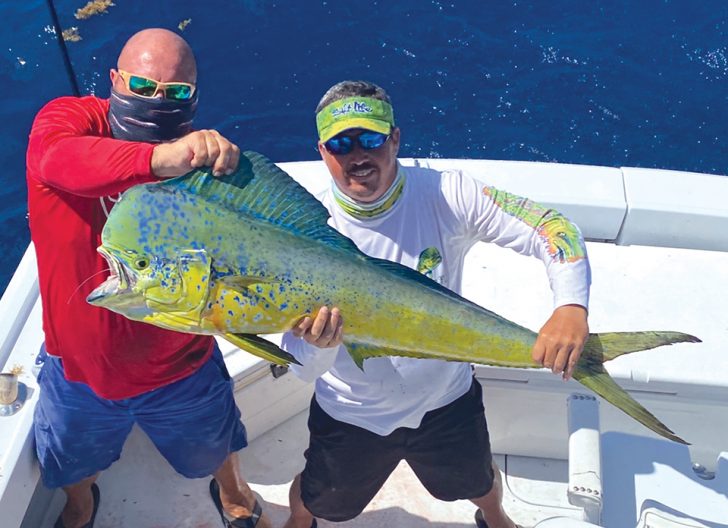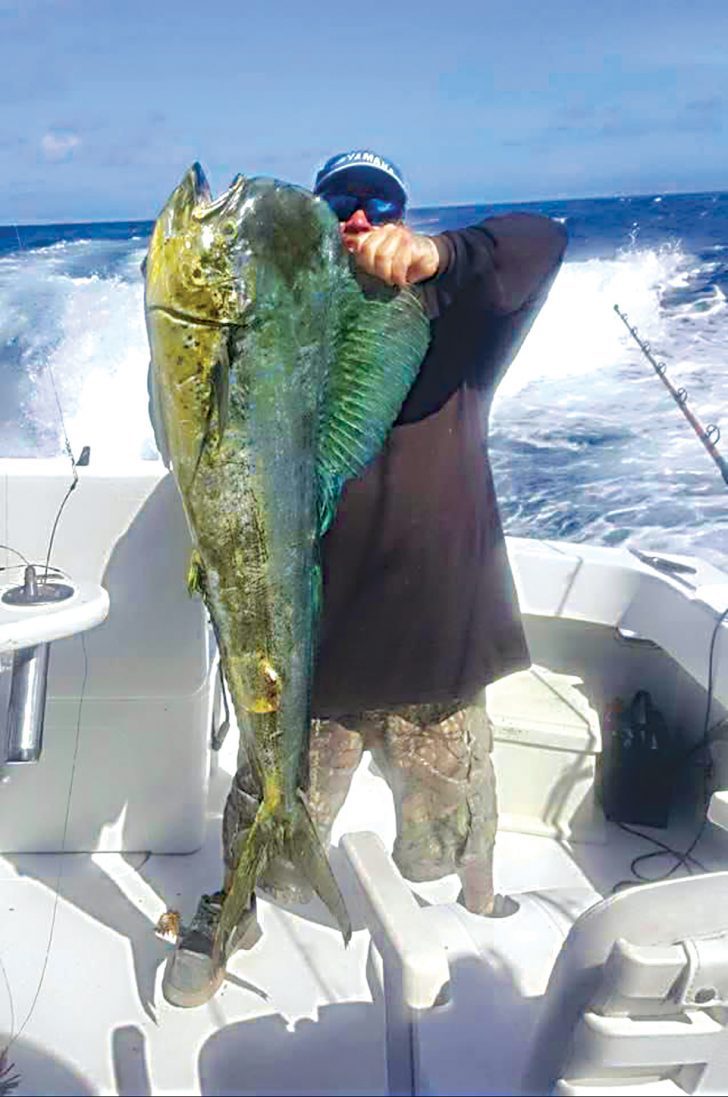By: Capt. Joel Brandenburg

March Mahi starts to heat up this time of year. Birds start their daily migration, heading offshore in the morning hunting baitfish. Weed lines start lining up offshore. In the Middle Florida Keys, it’s common for offshore anglers and captains to head out to the Marathon Humps targeting Black Fin Tuna and also hitting deep drop spots in and around the Humps for Snowy Grouper, Golden Tilefish, Queen Snapper, Black Bellied Rosies, Wreckfish and Swordfish.
What happens this time of year is typically on the way out to the Humps you’ll find diving birds, organized weed lines and floating objects that make mahi habitat. VS the winter time where you’ll go out 25 miles to the Humps and not see a bird, a weed line or anything floating. Normally in the winter time you have to focus on color change and water temperature changes to find Mahi’s. Winter time Mahi catches are few and far between, but when the water starts to warm up Mahi come in closer to feed and breed. It’s one of the times of year that you have a good chance at a real slammer Mahi.

We like to use mono rather than wire, because we get more Mahi hits, but the tradeoff is using mono rather than wire takes you out of the wahoo game. We like to use single hooked rigs rather than double hooks. The double hooked rigs hinder the natural movement of the ballyhoo. We sight cast for Mahi one of two ways. The first way is the most common and popular. We leave the hooked mahi in water as a decoy and pitch our pilchards or cut bait at the surrounding Mahi. The other way we sight cast is with white jigs with white plastic bodies for Mahi is finding them suspended under a floating object or weed line.
— To fish with Captain Joel Brandenburg of Ana banana Fishing Co., call or text him at 305.395.4212 or 813.267.4401 or visit www.marathonfloridakeysfishingcharters.com or stop by at 11699 Overseas Hwy, Marathon, FL
